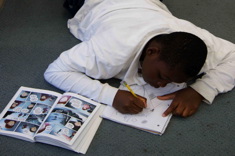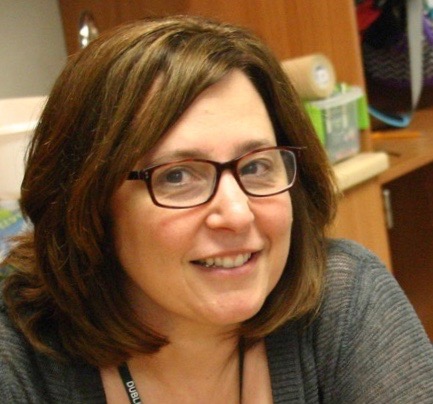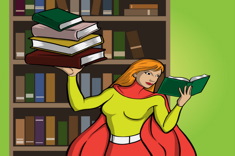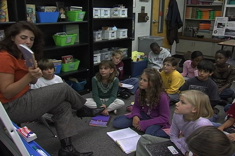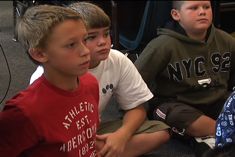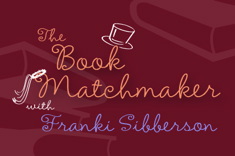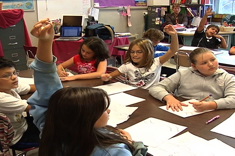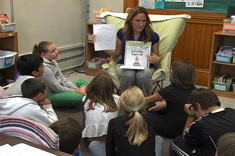Graphic novels have become part of our students' reading lives. It only makes sense that because of this, they'd want to write graphic novels. I am all for students trying out genres they've read in writing workshop, but I have had trouble supporting students to write quality graphic novels. I have access to several technology tools, such as the Comic Life software that helps students do this type of design on the computer. But whether they are creating comics and graphic novels by hand or on the computer, it is the story that matters. I have struggled with helping students tell a good story in this format for years. I have read countless student comics full of sound effects, but lacking any plot.
I recently realized I have been looking for the wrong kinds of mentor texts. I have led conversations with students around graphic novels they love such as the Babymouse by Jennifer Holm series and Hikaru No Go
by Yumi Hotta. These are great conversations that help students begin to think about format and text features, but these are long stories so it is hard to study them in depth.
One specific read aloud The Gingerbread Man Loose in the School by Laura Murray helped me see a different path. This is a picture book told in simple graphic form. The comic type illustrations tell a new story of a gingerbread man that students love. I realized quickly that asking kids to write versions of favorite or traditional tales in graphic form might be most doable when getting started in writing graphica. I started looking for other simple texts that had things to teach students about this type of writing.
My search for new mentor texts has been successful. I have been surprised at the number of shorter books I can share with students as we think about creating graphic pieces. For this study, I've found a variety of books to fuel conversations with students that I hope will impact their writing.
I've found a few traditional or familiar tales told in a graphic format that will build on the conversations we had around The Gingerbread Man Loose in the School. Two favorites are the oversized books, There's a Wolf at the Door
and There's a Princess in the Palace
, both by Zoe Alley. Each of these books contains five stories retold in graphic format. The stories are humorous, and the dialogue gives characters a different voice than the characters in the traditional versions of these stories. These books provide good examples for students of how familiar stories can be retold by using the features of graphica.
I recently discovered Ancient Egypt: Tales of Gods and Pharaohs by Marcia Williams. This book takes several myths and puts them into a comic book type format. Williams has other books that take a similar approach. Because they are short and a genre that is not often available in comics, I am glad to have them in my collection as possible mentors for students.
It seems that our students are constantly creating stories about the toys and games that are part of their lives. The Traction Man picture books by Mini Grey can help them create stories around favorite toys. In these stories, Traction Man has many adventures in and around his home.
For students to create great stories in this format, they must understand how to tell stories with pictures. I have been keeping my eye out for books that are told primarily in pictures. Blackout by John Rocco is a great family story told mainly through illustrations.
You Will Be My Friend and Children Make Terrible Pets
by Peter Brown are books that highlight the difference between narration and dialogue. In both of these humorous stories, the dialogue bubbles are created in one color while the narration boxes are created in another. I plan to use these books when talking to students about the need for both narration and dialogue, as well as the difference between the two.
Before students begin to write a graphic novel or a short piece of graphica, I want them to think hard about the elements of their story. One of the elements is character development. The Astonishing Secret of Awesome Man by Michael Chabon is a great picture book that tells about one particular "superhero." It leads to good conversations about characters and details.
Balloon Toons is a new graphic series for new readers. The text is simple, and there is a great deal of visual support within large frames. The stories have sequential plots with obvious problems and solutions. Often my students create graphic stories that lack story elements and these stories help make problem and solution clear to students.
So often, kids begin writing comics or graphica with illustrations and sound effects only. Superhero Joe by Jacqueline Preiss Weitzman gives kids a model of sound effect bubbles embedded in a narrated story.
All of these books will allow us to talk about the qualities specific to graphic novels, including talking bubbles and text boxes. But these books will also help us begin conversations about the more important issues of story and meaning.

